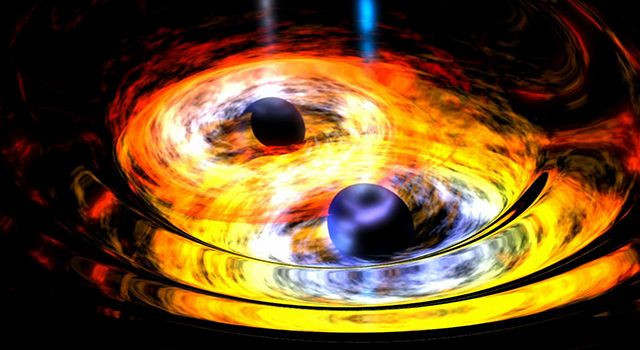Supermassive Black Hole Merger Could Finally Solve The 'Final Parsec Problem'

Binary black holes, as the name suggests, are a system composed of two black holes locked in close orbit around each other. Since most galaxies in the universe are believed to harbor one supermassive black hole at their center, the presence of a binary system is conclusive evidence of a galactic merger. Although only a few candidates for such a system have ever been detected, astronomers at the University of Maryland, College Park, now believe that they have discovered incontrovertible evidence of such black-hole twins.
“We believe we have observed two supermassive black holes in closer proximity than ever before,” Suvi Gezari, assistant professor of astronomy at the university and a co-author of a new study, published last week in the Astrophysical Journal Letters, said, in a statement released Monday. “This pair of black holes may be so close together that they are emitting gravitational waves, which were predicted by Einstein’s theory of general relativity.”
According to the theory of general relativity, gravity is a product of the curvature of space-time. And, it is hypothesized that gravitational waves are responsible for transporting energy in the form of gravitational radiation -- much like electromagnetic waves carry electromagnetic radiation. The detection of binary black hole systems is significant as they are believed to be the strongest known sources of such gravitational waves.
This particular binary system was detected in the quasar PSO J334.2028+01.4075 with the help of powerful ground-based telescopes. A quasar is a compact region at the center of a massive galaxy, which is heated to such an extent with the accretion of matter by its black hole that it emits massive amounts of energy and can even outshine the galaxy in which it resides.
This particular quasar is believed to have an extremely massive black hole about 10 billion times the mass of the sun. Periodic fluctuations in the light of the quasar, along with information obtained from the spectrum of that light, led the researchers to believe that the quasar’s black hole is closely orbiting another supermassive black hole in a neighboring galaxy.
“The discovery of a compact binary candidate supermassive black hole system like PSO J334.2028+01.4075, which appears to be at such close orbital separation, adds to our limited knowledge of the end stages of the merger between supermassive black holes,” Tingting Liu, the paper’s lead author, said, in the statement.
However, it is still not clear whether the researchers would be able to observe the actual merger of these two black holes. If they do, it would go a long way in shedding light on something known as the “final parsec problem,” which refers to the failure of current theoretical models in predicting what the final stages of a black hole merger may look like.
© Copyright IBTimes 2025. All rights reserved.






















